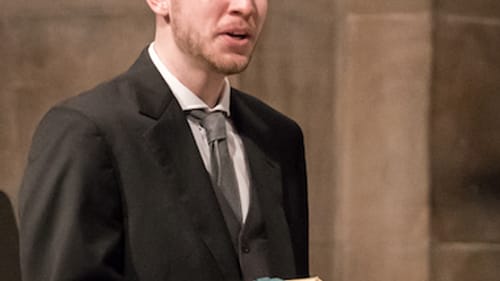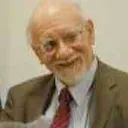Stay in the Loop
BSR publishes on a weekly schedule, with an email newsletter every Wednesday and Thursday morning. There’s no paywall, and subscribing is always free.
New Year's Eve with J.S. Bach
Choral Arts presents Bach's 'Christmas Oratorio'

Good is what I feel good after, Ernest Hemingway said. By that standard, Choral Arts Philadelphia produced something good when its enterprising artistic director, Matthew Glandorf, led it through Bach’s Christmas Oratorio on December 31, 2016.
Unfortunately, readers (and editors) generally want something more than a simple statement that a reviewer felt good after a performance. They might want to know, for example, why you felt good, or what kind of good you felt.
Genius at work
In the fourth section of the Christmas Oratorio, there’s a tenor aria with an instrumental obbligato — an obligatory accompaniment for instruments specified by the composer. In this case, Bach calls for two violins, along with the harpsichord and cello that fill out most Baroque accompaniments. Bach being Bach, you can assume he didn’t ask for two violins so they could play the same line in unison. Rebecca Harris and Christof Richter created a fugue. They played contrapuntal lines against each other. They entered and exited at different points. They played brief solos.
Their displays had a direct relationship to the tenor’s text, in addition. Bach gives the accompaniment an understated march rhythm, with emphatic cello strokes thumping out the beat of the march. His music adds a heroic aura to the abstract spirituality of a text praying for the strength and courage to do right.
The Christmas Oratorio parades 64 arias, choruses, and recitatives past its audience. They all bear little signs that say “Genius at Work.”
Things get complicated
The Christmas Oratorio is a group of six cantatas that form a unified piece with a single story line. Bach connoisseurs consider it one of Bach’s major choral works, on the same level as his passions and his Mass in B Minor. It isn’t performed as often as those pieces because it presents practical difficulties. For one thing, it’s a long piece by modern standards. The six cantatas were originally performed during church services on six feast days scattered through the twelve days of Christmas. When they’re played in one performance, they require an audience that can sit still for three hours.
The instrumentation raises other problems. As Matthew Glandorf pointed out in the program notes, each cantata requires different instruments. The second cantata requires four oboes, the others only two. The fourth cantata requires two horn players, who only play in that one segment. The budget has to include funds for two oboists and two horn players who play for a small part of the oratorio.
Glandorf is one of the most creative music directors operating in a city that is currently bursting with music directors with fertile imaginations. He has a good track record, but I’m certain I’m not the only person who expressed some skepticism when he announced he was going to perform the Christmas Oratorio on New Year’s Eve in 2014.
Meeting the challenge

The Japanese perform Beethoven’s “Ode to Joy” on New Year’s Eve, and I can understand that. Some of the big exultant choruses in Bach’s Mass in B Minor might be appropriate, too. The Christmas Oratorio is a more low-key affair. It has its joyous moments — nobody does joy better than Bach — but there’s nothing monumental about it. There’s plenty of joy in that fourth section tenor solo, but it’s created with complexity, the vitality of an irrepressible musical imagination, and the spectacle of a small group of highly skilled people turning Bach’s score into a dynamic sonic tapestry. It isn’t the kind of thing most modern Americans associate with New Year’s Eve.
Glandorf wisely didn’t try to attract people to a midnight performance. He scheduled the oratorio from 4 to 8 pm, with an hour intermission, and Choral Arts provided refreshment concessions inside the church. The 2014 performance sold out, and I felt most of the audience left it, as I did, feeling their New Year’s activities had received a special blessing. One member of the audience liked it so much he put up a challenge grant so Choral Arts could do it again this year.
Bach’s creativity and his vision of life come to us wrapped in the type of Christianity current in some sections of 18th-century German culture. You don’t have to share Bach’s beliefs to respond to the Christmas Oratorio. Some of them may even repel you. It doesn’t matter. Bach was stuck in his own time and place, like all of us, but his art turns a parochial vision into something universal. He makes me feel I’ve been connected to eternity. That’s a good way to feel on New Year’s Eve.
What, When, Where
Choral Arts Philadelphia: Bach, Christmas Oratorio. Six cantatas composed for the days celebrating Christmas, the Annunciation to the Shepherds, the Adoration of the Shepherds, New Year’s Day, the Journey of the Magi, and the Adoration of the Magi. Jessica Beebe, Rebecca Myers, soprano soloists. Maren Montalbano, Jenifer L. Smith, alto soloists. Nicholas Karageorgiou, tenor soloist. Steven Eddy, Robert Essentrout, Jean Bernard Cerin, bass soloists. James Reese, Evangelist. Choral Arts Philadelphia, chorus. Philadelphia Bach Collegiums, period instrument orchestra. Matthew Glandorf Artistic Director. December 31, 2016 at the Philadelphia Episcopal Cathedral, 23 S. 38th Street, Philadelphia. (267) 240-2586 or choralarts.com.
Sign up for our newsletter
All of the week's new articles, all in one place. Sign up for the free weekly BSR newsletters, and don't miss a conversation.
 Tom Purdom
Tom Purdom